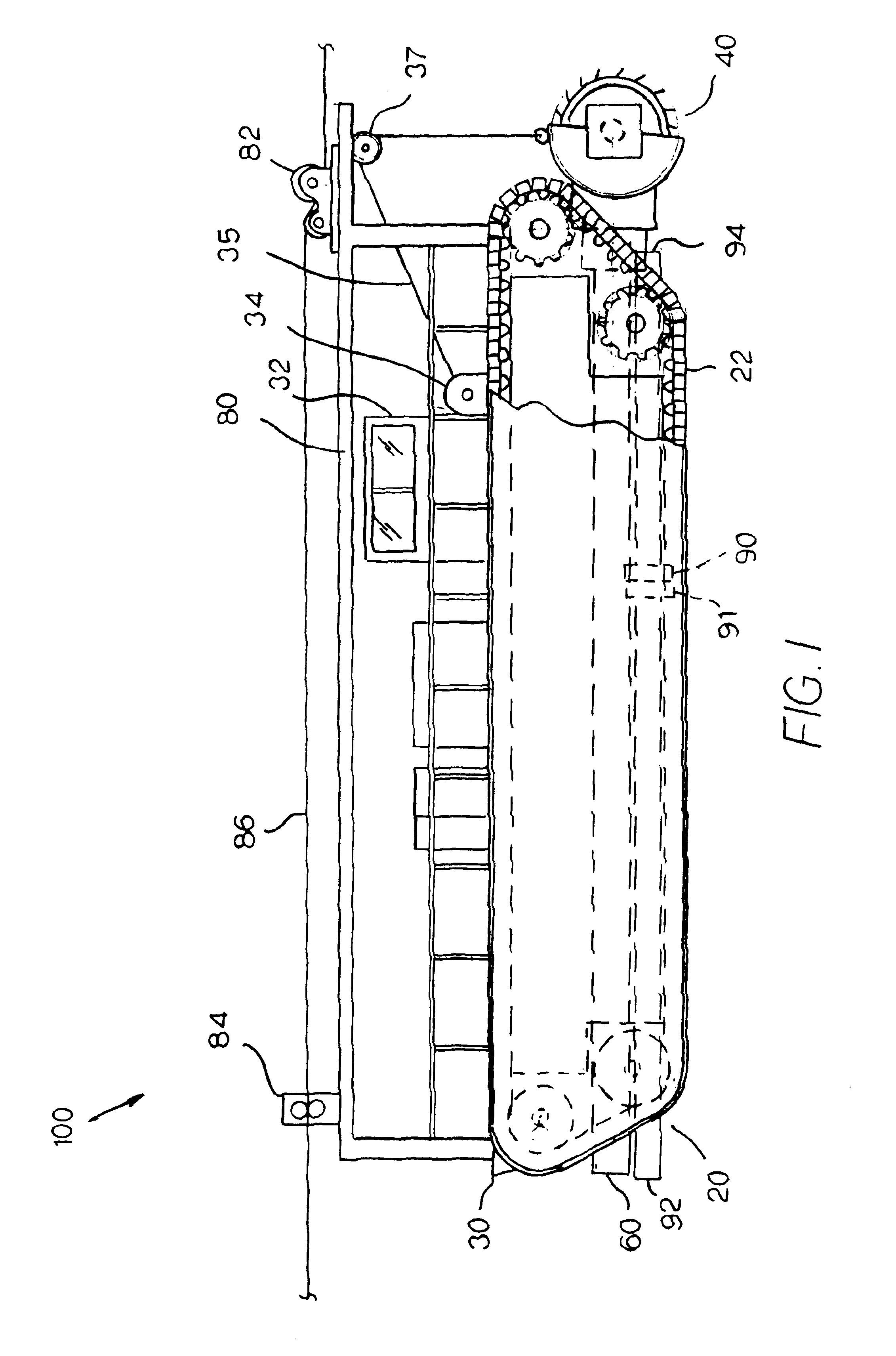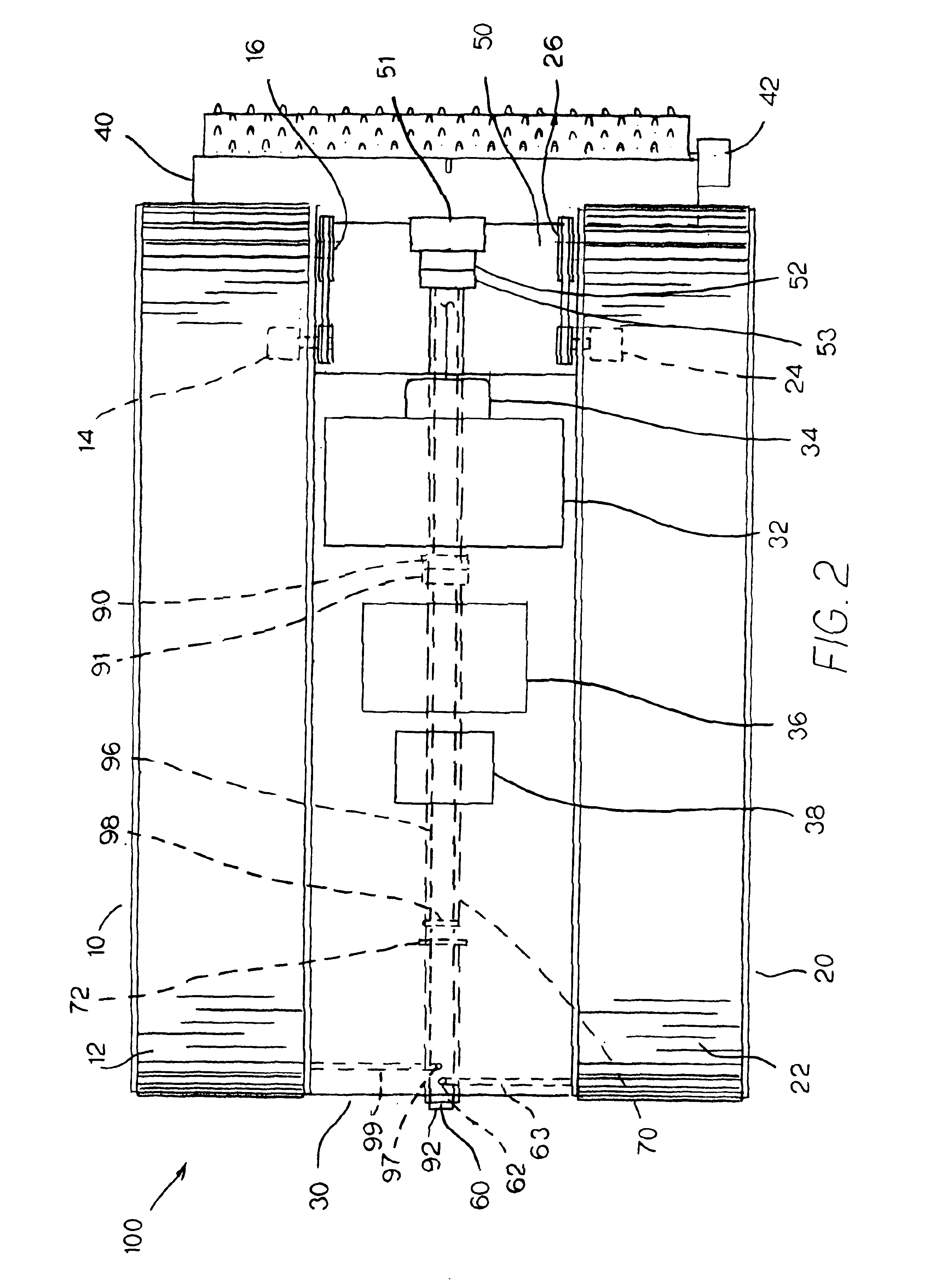Amphibious dredging vehicle and method for restoring wetlands using same
a technology of amphibious dredging and amphibious dredging, which is applied in the direction of water cleaning, mechanical machines/dredgers, land reclamation, etc., can solve the problems of inefficient and slow speed of amphibious vehicles moving through deeper water, and inability to reach many areas
- Summary
- Abstract
- Description
- Claims
- Application Information
AI Technical Summary
Benefits of technology
Problems solved by technology
Method used
Image
Examples
Embodiment Construction
[0028]The inventor now moves to a detailed description of an embodiment of an amphibious dredging vehicle 100 according to the invention.
[0029]As best seen in FIG. 2, amphibious dredging vehicle 100 has first floatable pontoon 10 and second floatable pontoon 20 with a link disposed therebetween and fixed thereto in conventional fashion, such as by welding or bolting the link to floatable pontoons 10 and 20. In this embodiment, floatable pontoons 10 and 20 are constructed of lightweight and sturdy metal and are equipped with conventional internal baffles, which increase the strength of the pontoons and render the pontoons less likely to lose their buoyancy due to a leak or puncture. The link between the floatable pontoons 10 and 20 may take any convenient and sufficiently sturdy form. In the embodiment depicted, the link takes the form of a conventional metal frame 31 having a generally flat deck 30 mounted thereon. The deck 30 allows for a convenient mounting point for other compone...
PUM
 Login to View More
Login to View More Abstract
Description
Claims
Application Information
 Login to View More
Login to View More - R&D
- Intellectual Property
- Life Sciences
- Materials
- Tech Scout
- Unparalleled Data Quality
- Higher Quality Content
- 60% Fewer Hallucinations
Browse by: Latest US Patents, China's latest patents, Technical Efficacy Thesaurus, Application Domain, Technology Topic, Popular Technical Reports.
© 2025 PatSnap. All rights reserved.Legal|Privacy policy|Modern Slavery Act Transparency Statement|Sitemap|About US| Contact US: help@patsnap.com



